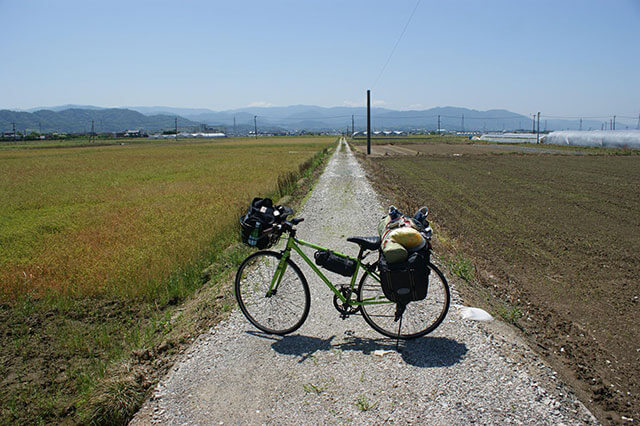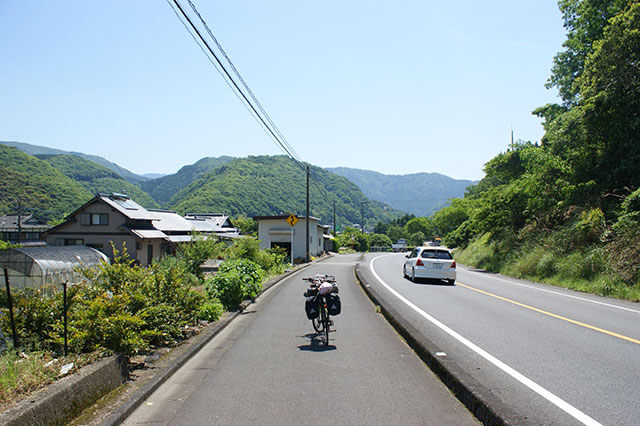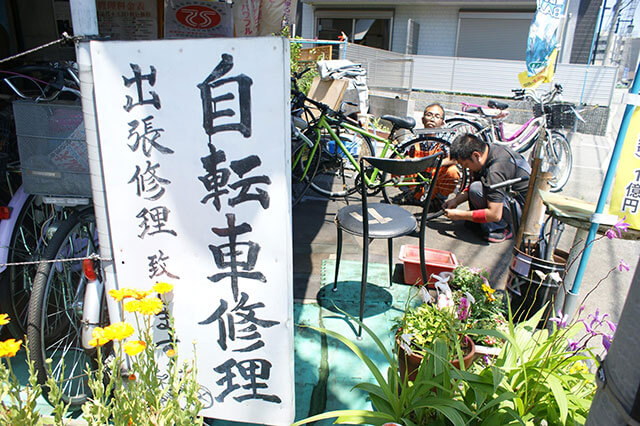
Traveling around Japan by bicycle is undoubtedly one of the best ways to see the country. Known for its mountains, Japan offers adventurous routes through its diverse landscapes as well as a web of less adverse roads that cut valleys through the hills. Whether you’re on a shoestring budget, looking to get off the beaten track, or just love a good cycle, a bike tour of Japan is guaranteed to be an adventure like no other.
-
01
1 - Finding a bike
![1 - Finding a bike]()
1 - Finding a bike
Japan create bikes quite like their crafts and cuisine: with exceptional precision and style. The most popular brands include Anchor by Bridgestone, Miyata, and Araya, which can be found in shops all over the country. For the more frugal traveler, good quality and affordable second-hand bikes (“chuko jitensha”) are easy to get your hands on for around 10,000 to 20,000 yen. Second-hand shops are scattered all over cities, including Suginami Clean Cycle in Tokyo and The Fixer in Fukuoka. However, with rear bike racks a rare find, those planning to carry panniers will most likely need to buy a rack separately and ask a bike mechanic to attach it - which, although a free service in most shops, may limit your bicycle options.
-
02
2 - Buying tools and cycling gear
![2 - Buying tools and cycling gear]()
2 - Buying tools and cycling gear
It’s good to start your journey with some basic tools in case you run into issues out of reach of a bike shop. A repair kit and bike pump are necessities best bought at a shop where you can also request a demonstration on bike maintenance including how to fix a puncture. While other tools can also be found at bike shops, don’t hesitate to head to the 100 yen shop for 100-yen versions of pliers, Allen keys and the like.
For most cycling clothing, a bike shop or purchasing online is the best option - don’t forget those padded shorts! Panniers, on the other hand, are incredibly hard to come by so you’ll most probably need to order them into a shop or buy them online. Good bike shops around Tokyo include Y’s Road and Cycle Base Asahi. -
03
3 - Staying safe on the roads
![3 - Staying safe on the roads]()
3 - Staying safe on the roads
Once you’re prepared with your bike and gear, it’s time to go! While the most important thing is having fun, roads in a new country - and signs in a different language - mean you’ll need to stay extra vigilant. Remember to wear a helmet, keep to the left, and wear visible clothing. One of the greatest benefits to traveling Japan by bike is that cycling on the pavement is accepted almost everywhere - even in the cities. Look out for the large pavements that often line the roads providing the perfect safe lane for cyclists.
-
04
4 - Recharging
![4 - Recharging]()
4 - Recharging
Unless you’re planning the more challenging map-reading navigation technique, it’s most likely you’ll have Google Maps directing you around the country, which we all know leads to an exhausted battery quite rapidly. But never fear, the Japanese convenience store is here! The high concentration of 7 Elevens, Lawsons, and Family Marts continues throughout most of the country even into the countryside. Likely to become your best friend in no time, these stores are not only good for recharging your own batteries with much-needed snacks and sugary caffeinated beverages but also provide plug sockets outside which can be used to charge phones and other electronic devices.
-
05
5 - Extra tips
![5 - Extra tips]()
5 - Extra tips
Getting help along the way: There is a surprising number of bike shops around Japan, both in the cities and in rural towns. Most offer to pump your tires, fix punctures, and service your bike for free although you’ll likely be charged for any serious repairs.
Taking bikes on public transport: Unfortunately, bikes aren’t allowed on trains, buses, or coaches unless they are taken apart and stored in a bike bag. Sometimes there are additional charges added for bike bags, including for air travel.
Planning your journey: Once everything’s in place, it’s time to start planning your journey. However, fitting in some of the country’s most popular cycle routes guarantees some beautiful but challenging days out: The Shimanami Kaido on Shikoku offers a 70-kilometer cycle route across a series of spectacular suspension bridges that cross six islands; the rural Noto Peninsula is home to the Tour de Noto route which boasts 400 km of beautiful coastal scenery to one side and mountains to the other; and much of Japan’s southern island Kyushu which includes the Maple Yaba Cycling Road and the trip from Usa to Beppu.
Deciding which part of Japan to cycle is tricky with so many beautiful places to discover but with the freedom of a bicycle, you’re sure to stumble across hidden gems at every turn in your own unique itinerary.- Seto Inland Sea Shimanami Kaido
-
-
- Hiroshima Prefecture Onomichi City - Imabari City, Ehime Prefecture
-
View All- 耶馬溪サイクリングターミナル
-
-
- 大分県中津市耶馬溪町柿坂353
-
-
-
- 0979-54-2700
-
View All
Beppu Ekimae Hotel Hayashi
3-5 Ekimae-Honmachi Beppu Oita







 Go here
Go here











